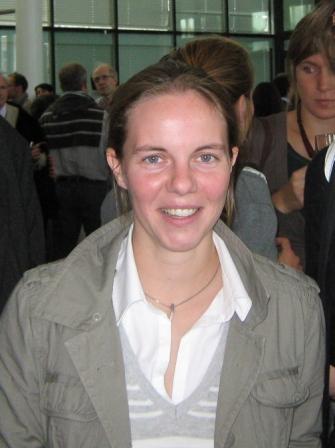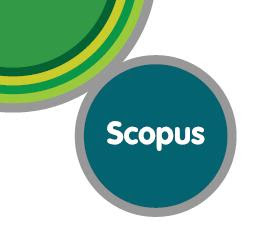 |
Valérie DORMAL 10, place Cardinal Mercier Bureau D216 010/47 31 45
|
Research Interests :
My main interest of research consists in the investigation of magnitude estimation processing (quantity, numerosity, duration, length,...).
By using behavioral and neuroimaging techniques (fMRI, TMS, ERPs,...), the main aim of our work is to lead to a better understanding of the representational and cerebral organisation of the magnitude system.
PhD abstract:
Adults, infants and animals process and represent numerosity, time and length and they use these quantitative dimensions to guide learning and behaviour. From a broad range of behavioural, physiological, developmental, lesional and neuroanatomical data on magnitude processing, Walsh (2003) recently proposed the existence of a generalised magnitude system located in the parietal cortex.
In a series of behavioural, neurophysiological and neuroimaging studies with healthy adult participants, we assessed the functional interactions between these magnitudes, we isolated the common and specific brain areas underlying their processing, and we tested the causal role played by these areas. Our results demonstrate for the first time in within-participant designs the implication of an area along the right intraparietal sulcus (IPS) commonly activated in numerosity, duration and length processing. However, this common area appears causally involved only in numerosity and length judgements, as demonstrated by transcranial magnetic stimulation studies.
Together, our findings support the idea that the IPS holds both a common and partially distinct and specific representations and/or mechanisms for numerosity, time and length processing.
Current position: Post-doctoral Researcher in Laboratoray for Experimental Psychopathology (LEP), UCL, Belgium under the supervision of Prof. Pierre Maurage
Topic: Emotional and cognitive (attention and executive functions) processes
Populations: Healthy individual; Alcohol-dependence; Binge drinking
Tools: Behavioural, electrophysiological (ERPs) and neuroimaging (fMRI) measures; Transcranial Electrical and Magnetic Stimulation
Publications :
Articles
1. Dormal, V., Seron, X., & Pesenti, M. (2006). Numerosity-duration interference: A Stroop experiment. Acta Psychologica, 121, 109-124. ![]() ,
, ![]()

2. Dormal, V., & Pesenti, M. (2007). Numerosity-length interference: A Stroop experiment. Experimental Psychology, 54 (4), 289-297.![]() ,
, ![]()

3. Dormal, V., Andres M., & Pesenti, M. (2008). Dissociation of numerosity and duration processing in the left intraparietal sulcus: A transcranial magnetic stimulation study. Cortex, 44 (4), 462-469.![]() ,
, ![]()

4. Dormal, V., & Pesenti, M. (2009). Common and specific contributions of the intraparietal sulci to numerosity and length processing. Human Brain Mapping, 30(8), 2466-2476.![]() ,
, ![]()

5. Dormal, V., Andres, M., Dormal, G., & Pesenti, M. (2010). Mode-dependent and mode-independent representations of numerosity in the right intraparietal sulcus. NeuroImage, 52, 1677-1686. ![]() ,
, ![]()

6. Dormal, V., Dormal, G., Joassin, F., & Pesenti, M. (2012). A common right fronto-parietal network for numerosity and duration processing: An fMRI study. Human Brain Mapping, 33(6), 1490-1501. ![]() ,
, ![]()

7. Dormal, V., Andres, M., & Pesenti, M. (2012). Contribution of the right intraparietal sulcus to numerosity and length processing: an fMRI-guided TMS study. Cortex, 48, 623-629. ![]() ,
, ![]()

8. Dormal, V., Grade, S., Mormont, E., & Pesenti, M. (2012). Dissociation between numerosity and duration processing in aging and early Parkinson's disease. Neuropsychologia, 50, 2365-2370. ![]() ,
, 

9. Dormal, V., & Pesenti, M. (2013). Processing numerosity, length and duration in a three-dimensional Stroop-like task: towards a gradient of processing automaticity? Psychological Research, 77, 116-127. DOI: 10.1007/s00426-012-0414-3 ![]() ,
, ![]()

10. Masson, N., Pesenti, M., & Dormal, V. (2013). Spatial bias in symbolic and non-symbolic numerical comparison in neglect. Neuropsychologia, 51(10), 1925-1932.![]()
![]()

11. Crollen, V., Grade, S., Pesenti, M., & Dormal, V. (2013). A common metric magnitude system for the perception and production of numerosity, length and duration. Frontiers in Psychology. DOI=10.3389/fpsyg.2013.00449 ![]()

12. Dormal, V., Schuller, A-M., Nihoul, J., Pesenti, M., & Andres, M. (2014). Causal role of spatial attention in arithmetic problem solving: Evidence from left unilateral neglect. Neuropsychologia, 60, 1-9. ![]() ,
,![]()
13. Masson, N., Pesenti, M., & Dormal, V. (2016). Duration and numerical estimation in right brain-damaged patients with and without neglect: Lack of support for a mental time line. British Journal of Psychology, 107(3), 467-483. doi: 10.111/bjop.12155
14. Dormal, V., Javadi, A., Pesenti, M., Walsh, V., & Cappelletti, M. (2016). Enhancing duration processing with parietal brain stimulation. Neuropsychologia, 85, 272-277. doi: 10.1016/j.neuropsychologia.2016.03.033
15. Masson, N., Pesenti, M., & Dormal, V. (2016). Impact of optokinetic stimulation on mental arithmetic. Psychological Research. doi: 10.1007/s00426-016-0784-z
16. Dormal, V., Crollen, V., Baumans, C., Lepore, F., & Collignon, O. (2016). Early but not late blindness leads to enhanced arithmetic and working memory abilities. Cortex. doi: 10.1016/j.cortex.2016.07.016
17. De Visscher, A., Noel, M.P., Pesenti, M., & Dormal, V. (in press). Developmental dyscalculia in adults: beyond numerical magnitude impairment. Journal of Learning Disabilities.
Chapter of book
1. Dormal, V., & Pesenti, M. (2012). Processing magnitudes within the parietal cortex. In A. Costa, & E. Villalba (Eds.), Horizons in Neuroscience Research (Vol.8). pp107-140. Nova Science Publishers: New-York. ![]()


